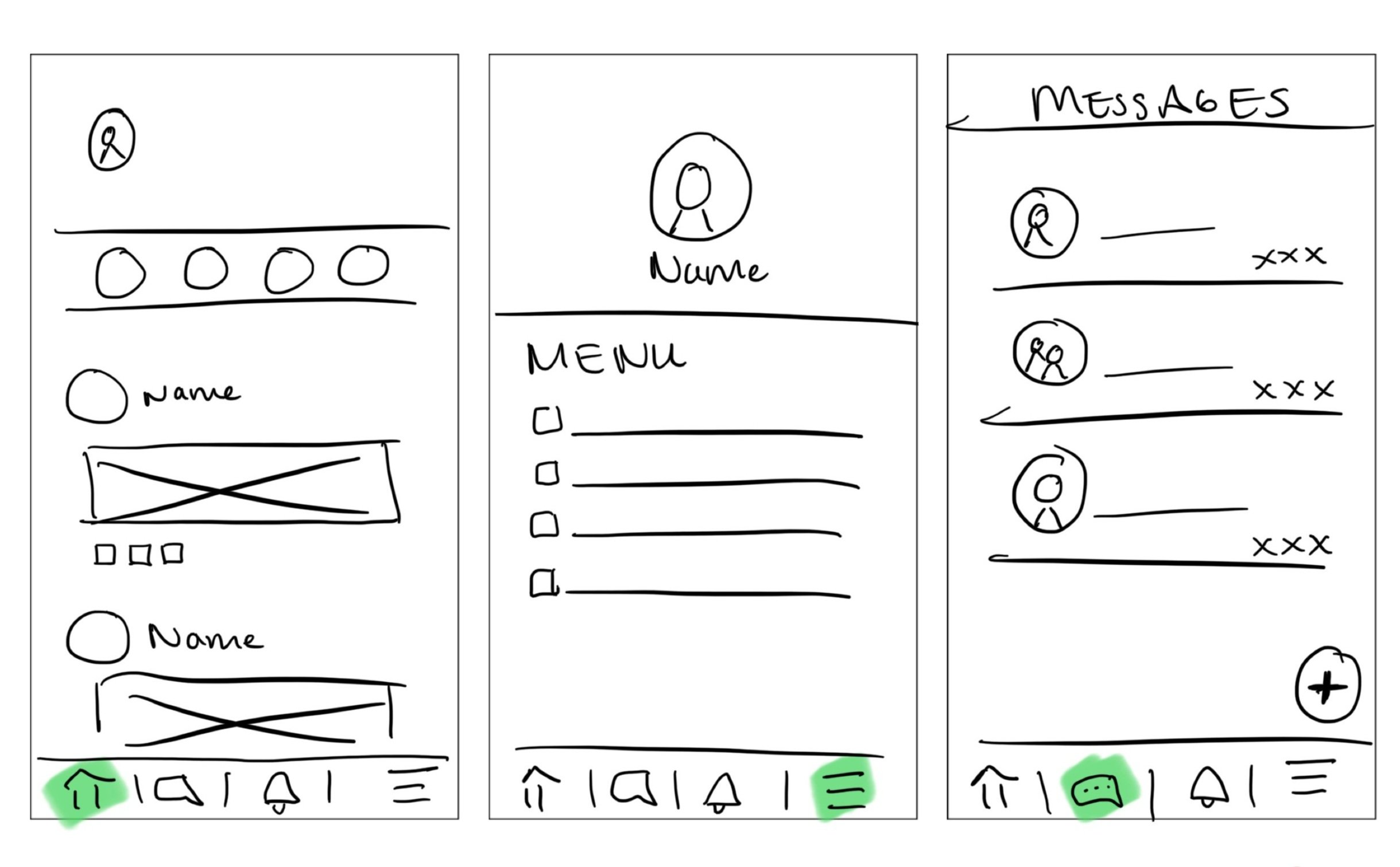
Overview
The project was a collaboration between Syracuse University and Lifia Corporation. Our goal was to understand the needs/challenges of individuals living with HIV and identify how technology can be useful in their health journeys.
We partnered with HIV clinics and participants in Indiana and Kentucky to conduct exploratory research. We learned individuals experience many health challenges due to their chronic condition, but they also face persistent social stigma associated with HIV.
After various rounds of field workshops and interviews, we leveraged our findings to create a social/advocacy app called Positive People. This app focuses on building social connections and reducing social stigma among people living with HIV in rural US.
Watch the video below for a brief overview of the Positive People app.
Our Team
This project was led by a part-time team including collaborators from Syracuse University and A.J. Boggs & Company. Our team included:
2 Researchers
1 UX Designer/Analyst
1 Mobile Developer
2 Support Staff
My role included designing and conducting research, developing a UX strategy, and managing stakeholders. Here are some of the tools I used for this project: Jira, Slack, Google Suite, Figma
Research
During the research process, we collaborated with with a group of 8 participants living with HIV and also worked closely with leadership from HIV clinics in Kentucky and Indiana.
1) Discovery Workshops
Participatory design workshops with 8 participants at various stages of their HIV journey
Focused on understanding user stories, needs, challenges, and design opportunities
Leveraged storytelling and participatory design to elicit requirements
Results: The discovery workshops allowed us to better understand user needs—which focused on access to education materials and resources that supported care and stigma advocacy.
2) Interviews
Semi-structured interviews with 6 participants (on Zoom/phone)
Focused on further understanding common roadblocks and needs
Results: Insights from interviews led us to pivot away from an initial platform idea of a forum platform to a mobile-first application.
Insights
We learned there are various unmet needs in the lives of individuals living with HIV, including:
Ongoing HIV education
Trained HIV providers
Advocacy/stigma reduction
Multicultural resources
Mental health support
Mobile friendly/accessible tools

Care management requires a system including social and health support

Participants emphasized a lack of eduction on HIV/AIDS

Early interventions are critical to ensure positive patient outcomes

A comprehensive approach is necessary for mental health support

Finding partners was an important unmet need

There is also a need for resources to be multilingual and multicultural
3) Persona Development
Created 12 personas to reflect the reoccurring and unique stories among the participants and those of other potential participants that were not represented in our sample
We used these personas throughout the rest of the research and design process
4) Story Mapping: Narrative Card Game
Given that target participants reflected different points in their HIV journey, we used story mapping to develop a clear list of challenges and needs for people at different stages in their HIV journeys.
We developed a storytelling card game called "Narrative Tapestry" to identify ways to keep both newly-diagnosed individuals as well as those with a normalized HIV-identity engaged on an app .
The story mapping led us to identify features to enable a sustainable HIV support app.
Results: Identified key features important for newly diagnosed members and identified key features to engage those with undetectable/stable condition who seek more advocacy opportunities.
We also authored an article documenting our research process and findings: Click to read the paper here.
Design
3) Mockups & Wireframing
I created simple mockups of the app screens for the various flows, including for: sign-up; messaging; navigating member levels, and more.
Using Figma, I worked with another researcher to develop low-fidelity wireframes for the core app features and flows.
Iterative Development & Testing
4) Usability Testing
After developing a test platform based on initial mockups, we conducted moderated testing with 6 of our key stakeholders
Tests focused on understanding navigation and other UX issues
We completed several rounds of user testing with our stakeholders (both remotely and in-person), tracking new issues on Jira, and iteratively fixing issues through project sprints.
Result: We identified key issues with the complexity of the invite-only sign up process and messaging features. User testing allowed our team to streamline the signup process and improve user navigation.
Reflection
I have learned so much about end-to-end UX research and product management from this project. Yet the biggest takeaway is the importance of ITERATION. The product has evolved over time and with each new update we continue to improve the platform by continuing to listen to the users, identify their key needs, and implement their feedback for a better user experience.
Next Steps
As we continue to improve the platform, we are working on the following:
Build community engagement: There are currently ~100 initial users on the platform and we are working with various local partners to sustainably engage the community members.
Design/launch stigma reduction hub: We are working on designing and implementing a hub for stigma reduction tools including a task board for advocacy projects, an educational toolkit and more.






